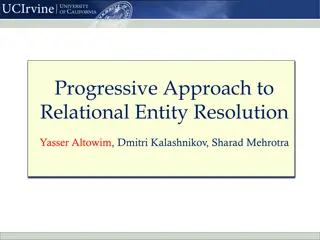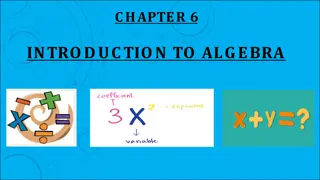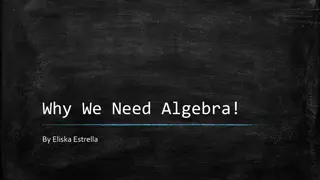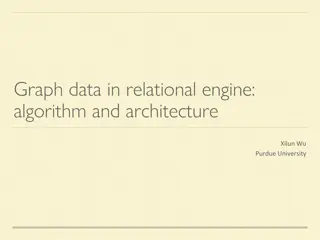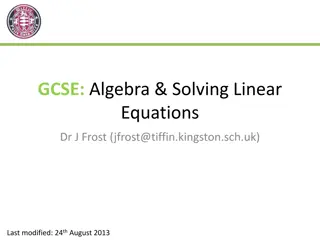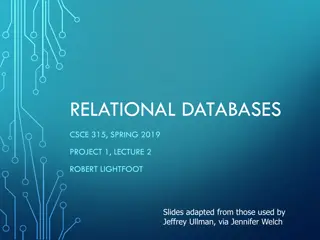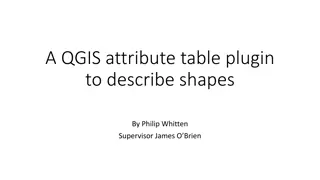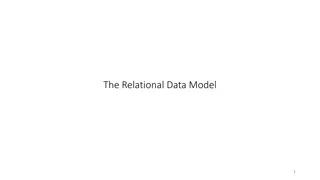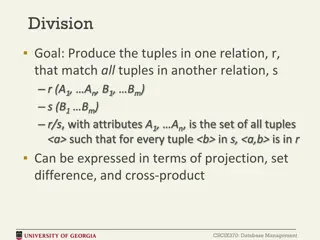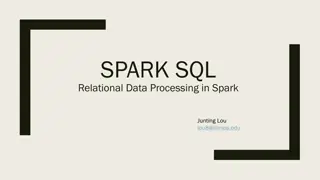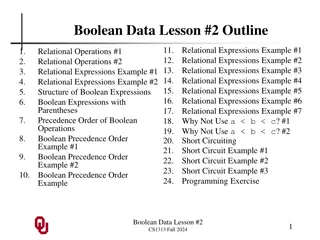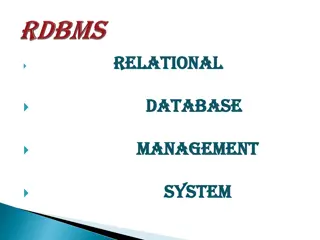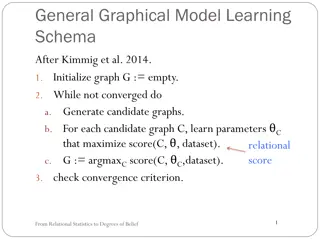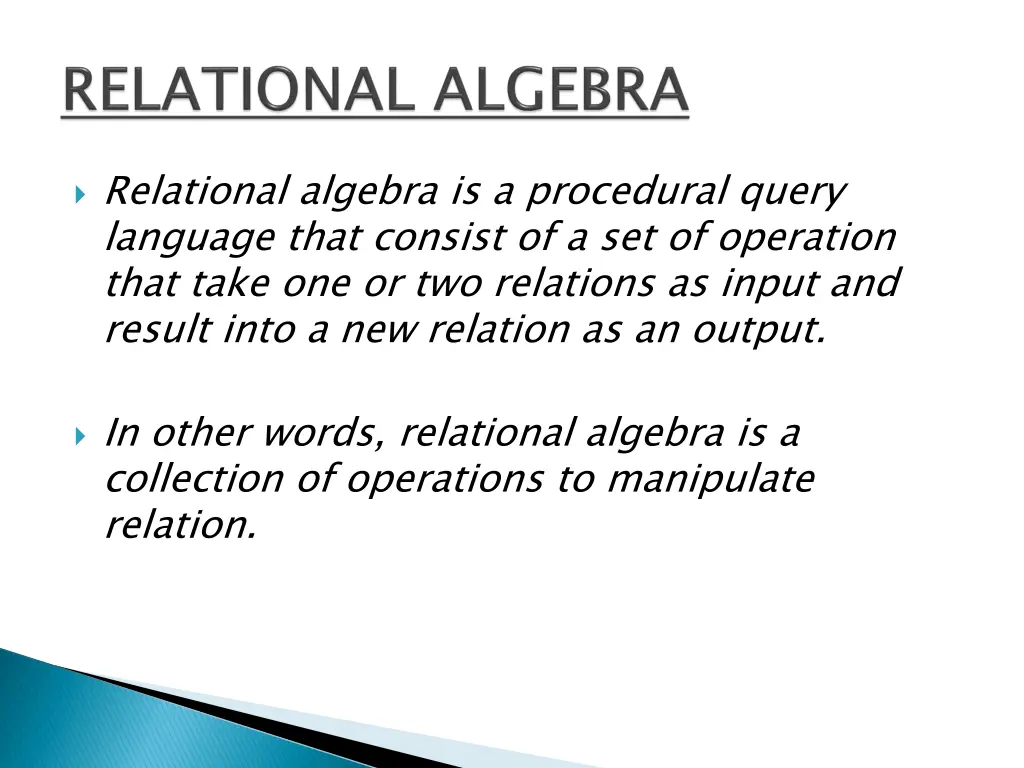
Understanding Relational Algebra in Database Management
Explore the fundamentals of relational algebra, a procedural query language used in database management. Learn about unary and binary operations, such as select, project, rename, union, intersection, and more, for manipulating relations effectively in a database system.
Download Presentation

Please find below an Image/Link to download the presentation.
The content on the website is provided AS IS for your information and personal use only. It may not be sold, licensed, or shared on other websites without obtaining consent from the author. If you encounter any issues during the download, it is possible that the publisher has removed the file from their server.
You are allowed to download the files provided on this website for personal or commercial use, subject to the condition that they are used lawfully. All files are the property of their respective owners.
The content on the website is provided AS IS for your information and personal use only. It may not be sold, licensed, or shared on other websites without obtaining consent from the author.
E N D
Presentation Transcript
Relational algebra is a procedural query language that consist of a set of operation that take one or two relations as input and result into a new relation as an output. In other words, relational algebra is a collection of operations to manipulate relation.
Relational algebra is divided into two types of operations: Unary operations: The operations operating on single relations are known as unary relation. Select operation Project operation Rename operation Binary operations: The operations operating on two or more than two relations are known as binary relation. Union Cartesian product Set difference Intersection Join 1. 2. 3. 1. 2. 3. 4. 5.
Select operation The select operation retrieves all tuples from a relation that satisfy a specific condition and also be considered as a filter that display only those tuples that satisfy a given condition. The select operation can be viewed as a horizontal subset of a relation. The Greek letter sigma ( ) used to denote select operation.
Project operation The project operation is used to select some required attributes from a relation while discarding the other attributes. It can be viewed as the vertical subset of a relation. The Greek letter (pi) can be used as project operator.
Rename operation When relational algebra operations are performed, the resultant relations are unnamed, hence cannot be used for later reference. In addition, it might be required to apply more operations on the relations obtained from other relation. In such situations, rename operator proves to be useful. The Greek letter ( )rho is used as rename operator. The rename operator is also known as assignment operator.
Union operation The union of two sets combine all data i.e., appearing either one or both relation. The set which results from the union must not contain duplicate elements. It is denoted by .
Intersection operation The intersection of two sets which contain all elements that are common in both the sets. It is denoted by intersection .
Cartesian product The Cartesian product of two relation is the concatenation of tuples belonging to the two relations. It is denoted by X.

